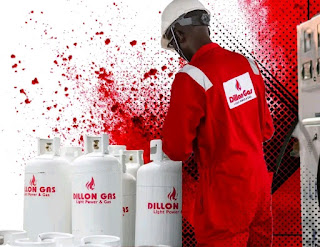LPG cylinders have become an integral part of households worldwide, no denying this fact. For it has provided a convenient and efficient source of energy for cooking and heating. The gas used in LPG cylinders is commonly known as liquefied petroleum gas, but what exactly comprises this gas, and what misconceptions surround it?
What Is The Gas Inside LPG Cylinders?
LPG, or liquefied petroleum gas, is a mixture of propane and butane gases. Propane and butane are hydrocarbons, which means they consist of hydrogen and carbon atoms. The unique properties of these gases make them highly suitable for storage in liquid form within the cylinders.
Scientific Reasons: Science 101
Propane and butane have higher energy content compared to other gases, making them efficient choices for combustion. This also makes LPG a top choice for a consistent and reliable source of heat. The liquefied form of these gases allows for easy storage and transportation. The process of compression and cooling, reducing the volume of the gas, makes it ideal for household use in cylinders.
The fact is, propane and butane have specific characteristics that comply with safety and regulatory standards for LPG use, which means that the gas inside cylinders is stable and suitable for residential and commercial applications.
Myths and Misconceptions
Myth 1: LPG contains harmful additives:
Some people mistakenly believe that LPG is mixed with harmful additives. In reality, LPG is a natural byproduct of crude oil refining and natural gas processing, and it does not contain any harmful substances.
Myth 2: LPG is highly explosive:
While LPG is flammable, it requires a specific concentration in the air to ignite. Proper handling and storage, along with adherence to safety guidelines, significantly reduce the risk of explosions. The gas is odorless, but an additive called mercaptan is included to give it a distinct smell for leak detection.
Myth 3: LPG is harmful to health:
There's a misconception that using LPG for cooking releases harmful substances into the air. In reality, LPG combustion produces minimal pollutants, and the gas is considered a cleaner-burning fuel compared to other alternatives.
Proper Use Of Gas Filled In LPG Cylinders.
It's important to clarify that LPG itself does not contain harmful additives. Any rumors about additives are likely rooted in misunderstanding the refining and purification processes undergone by LPG. However, there is a need to emphasize the importance of responsible use, proper storage, following up all safety guidelines. LPG is safe when handled correctly, and the risk of explosion is significantly reduced with precautionary measures.
LPG is a clean-burning fuel, and its use is generally safe for indoor cooking. Proper ventilation is also the key to ensuring a healthy environment, but LPG itself does not release harmful substances in significant quantities.
Final note should be that Propane and Butane are primary components of LPG.
FAQs
Q: What kind of gas is used in cooking gas cylinders?
A: Cooking gas cylinders are filled with LPG (Liquefied Petroleum Gas), which is a mix of propane and butane gases.
Q: Is LPG safe to use for cooking?
A: Yes, LPG is safe when handled properly and used according to safety guidelines.
Q: How does LPG work in cooking?
A: LPG is a gas that burns cleanly and efficiently in stoves and ovens to produce heat for cooking.
Q: Can LPG be used for anything else besides cooking?
A: Yes, LPG can also be used for heating homes, water heaters, and some vehicles.
Q: How do I know if my cooking gas cylinder needs refilling?
A: You can check the weight of the cylinder or use a gauge if available to see how much gas is left.
Q: How long does a cooking gas cylinder last?
A: The duration depends on usage, but typically a cylinder can last several months to years for regular cooking.
Q: Are there different types of cooking gas cylinders?
A: Yes, cylinders may vary in size and design, but they all contain LPG for cooking purposes.
Q: What should I do if I smell gas from my cylinder?
A: Leave the area immediately, avoid flames or sparks, and call for help to check for leaks.
Q: Can I transport a cooking gas cylinder myself?
A: Yes, but handle it carefully, keep it upright, and make sure you have a proper ventilation during transport.
Q: Where can I buy or refill a cooking gas cylinder?
A: Gas cylinders are available at authorized dealers or refill stations. Check with local suppliers for options and safety guidelines.


